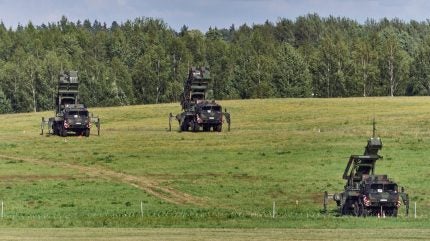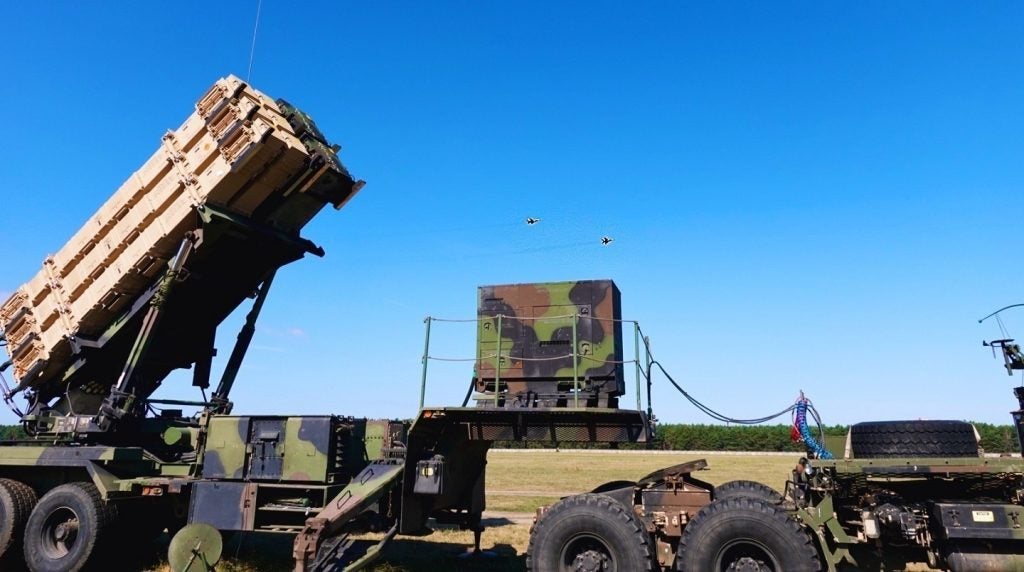
As Russia continues long-range missile and drone strikes amid its ongoing summer offensive in Ukraine, the importance of air defence systems has never been more pressing, with military and infrastructure targetted in a bid to degrade Kyiv ability to fight and also provide for its own citizens.
Following the Nato Summit in Washington in July, Ukrainian President Volodymyr Zelenskyy took to social media to thank allies for donations of Patriot and other air defence systems, but notably called for the provision of a total of 25 Patriot systems to form an integrated air defence network.
It is likely that some Patriot systems, if not already doing so, would be earmarked to protect Ukraine’s critical national infrastructure.
A 2023 paper from the US Congressional Research Service, citing a Nato fact sheet, stated that a Patriot ‘battery’ has six major components: a power plant [two vehicle-mounted 150KW generators], radar set, engagement control station, launcher stations, antenna mast group, and interceptor missiles (PAC-2s and PAC-3s).
The launcher stations transport and protect the interceptor missiles and provide the platform for the physical launch of the missile. Each launcher station can equip four PAC-2 missiles or 16 PAC-3 missiles.
How many launchers in a Patriot battery?
Determining the exact number of Patriot launch units, or stations, provided to Ukraine is difficult, with information released by donors citing ‘systems’, which does not include a breakdown of individual launchers, radar detectors, and other elements that comprise an overall Patriot battery.
A spokesman for the German Ministry of Defence told Army Technology that Germany has equipped the Ukrainian Armed Forces with three systems and two additional launchers.
“As you know, a system consists of several components. For reasons of operational security, we do not confirm the exact configuration of the systems,” the spokesperson stated.
The reference to two launcher units is distinct in that it does not refer to a provided system, but individual units within a larger battery. It could be the two provided launch units are battle damage replacements.
Data compiled by open-source intelligence sites Oryx indicates at least one German-sourced MIM-104 Patriot M901 launcher has been destroyed in Ukraine.
Another provider of Patriot air defence systems is the United States, which in its latest package of military and security assistance to Ukraine, the US Department of Defense (DoD) announced on 11 July 2024, that it would provide “one Patriot battery”, among other equipment.

A compiled list of all equipment provided to Ukraine published the same day stated that a total of two Patriot air defence batteries and munitions had been provided since February 2022. An earlier list, dated from 3 July, indicated a single Patriot battery sent to Ukraine, confirming the additional battery dated 11 July had been included in its updated equipment list.
However, the number of launch units within each battery has not been disclosed.
At the time of publishing, the US Army had not provided a response to questions from Army Technology as to the total number of Patriot launch units provided to Ukraine, nor the composition of a Patriot battery in US Army service.
It is thought that a US Army Patriot battery can number between six and eight launch units. The CRS reports that the US Army has 15 battalions of Patriot’s in its structure, each of which four separate batteries, indicating a potential 480 launch units operational.
Romania pledges Patriot , and ‘composite’ battery is created
Earlier, on 9 July, a joint statement from the US, Germany, Italy, Ukraine, Romania, and the Netherlands, committed to the provision of, among country-specific declarations, one Patriot air defence battery from Romania, as well as Patriot components donated by the Netherlands and other countries to “enable the operation of an additional Patriot battery”.
The provision of component elements to form a new Patriot battery point to individual launch units and associated radars being donated by European operators, resulting in only a slight degradation of national air defence capability.
These commitments were separate from respective US and German Patriot provisions, which have been included above.
In addition, new funding commitments, such as the £2bn loan agreement between the UK and Ukraine and the $1bn Immediate Action on Air Defense Initiative – are focussed on the provision of air defence systems to Kyiv.
Combined the publicly announced Patriot systems provided to-date, Western countries have delivered or pledged seven Patriot air defence batteries, significantly short of the 25 systems that Zelenskyy is seeking. In terms of launchers, seven air defence batteries could provide between 42-56 units, although it is possible that Ukrainian Patriot systems comprise a reduced number.
Too capable or expensive to donate?
Outlining a Patriot system’s capability, the CRS paper states that its phased-array radar systems has a reported range in excess of 150km, capacity to track up to 100 targets, and provide missile guidance data for up to nine interceptors.
The flight ceiling for Patriot interceptors is about 20km, with the system able to provide area coverage of 15-20km against incoming threats.
Given this, and the reported $1.1bn asking price for a Patriot system, operators of the system are potentially wary of reducing their own national air defence capabilities.
However, with Patriot performing well in Ukraine and its frontline use (see reported combat losses), the capability of the system could drive an increase in demand from other international customers, necessitating a build up of the industrial base (RTX/Lockheed Martin) to accommodate.




